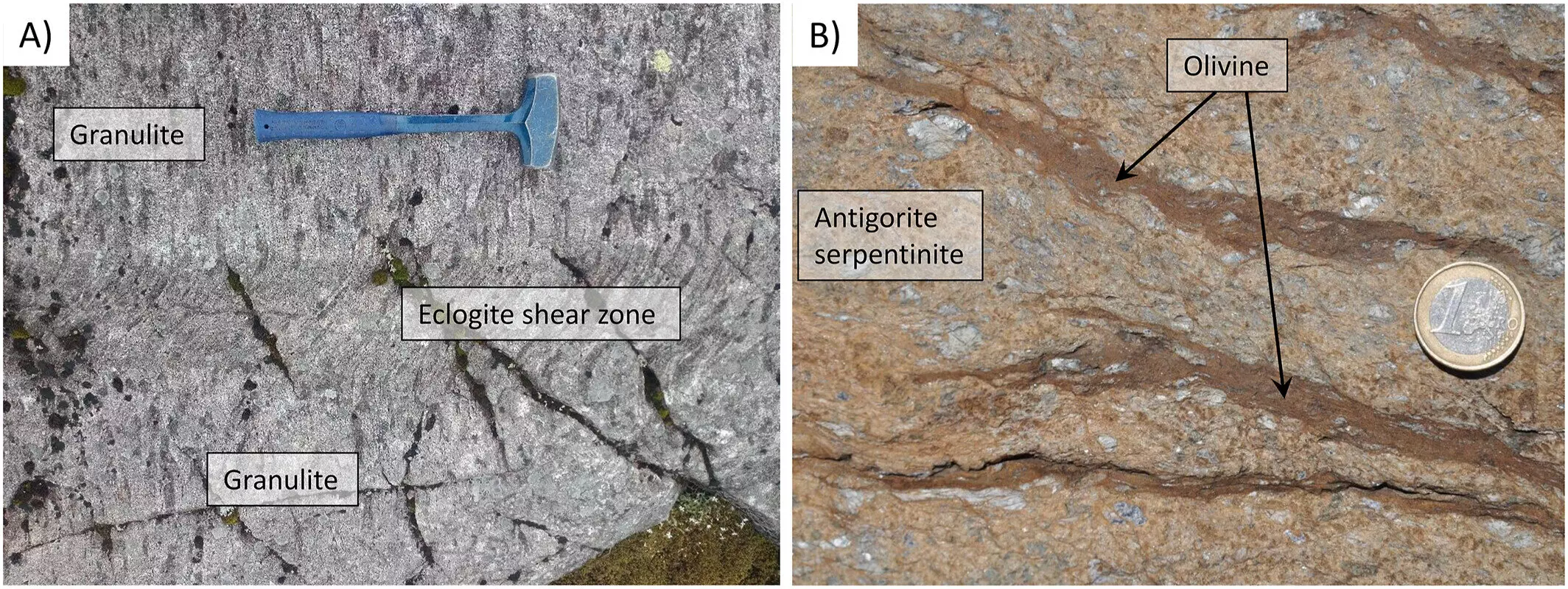The subterranean realm of the Earth is a mysterious place, where rocks interact with water in profound ways that can have extensive geological consequences. A recent study sheds light on this intricate relationship, exploring how water migrates through ostensibly impermeable rocks located deep within the Earth’s mantle and crust. Researchers led by Schmalholz have brought forth innovative mathematical models to describe the hydration and dehydration of these materials under extreme pressure and temperature conditions, revealing a complexity that could reshape our understanding of plate tectonics and continental movement.
The Mechanics of Hydration and Dehydration
It is well established that rocks can undergo significant transformations influenced by water. At high temperatures, certain minerals can chemically react, leading to the formation of denser materials that expel water—resulting in less dense and more porous rocks. This interplay gives rise to what the researchers describe as a “dehydration front” that courses through the geological landscape. Conversely, hydration processes entice water into mineral structures, akin to a dry sponge absorbing moisture, generating what is termed a “hydration front.” These phenomena represent competing processes that can dramatically affect the physical characteristics of rocks, thereby influencing geological stability.
Schmalholz’s research pivots around the behavior of water in these scenarios. He and his team employed one-dimensional simulations to model three distinct situations—two involving dehydration processes and one focusing on hydration. These mathematical representations illustrate how rocks, initially devoid of porosity, can temporarily acquire porous qualities, allowing for the movement of water in various directions. Notably, while hydration is always driven by an external water source flowing inward, dehydration can manifest in two ways: through the expulsion of water or through a process wherein external water compensates for the water being squeezed out of minerals.
Geological Implications of Water Movement
The implications of this study extend beyond academic inquiry into the fundamental processes of geology. As water moves through and alters rock structures, it has the potential to instigate physical changes that can trigger seismic activity. The breaking apart of rocks due to dehydration can lead to an increased likelihood of earthquakes, while the hydration process can similarly influence the geological stability of regions. Understanding these dynamics helps outline a clearer picture of how such natural disasters may correlate with water cycles deep within the Earth.
Additionally, the derived equations and insights provided by Schmalholz and his team can serve as a valuable resource for geoscientists exploring water’s role in geological phenomena. With such equations, researchers now possess a framework to analyze the influence of hydration and dehydration in their investigations of tectonic movements and related risks.
The research published in the journal Geochemistry, Geophysics, Geosystems represents a significant advancement in our comprehension of deep Earth’s geology. It exposes the intricate relationship between water and the Earth’s internal processes, unlocking new pathways for understanding tectonic movements, earthquake precursors, and mineral transformations over geological epochs. As further investigations unfold, the nuances of water’s role in shaping our planet will likely reveal even more about the processes that govern our dynamic Earth.


Leave a Reply